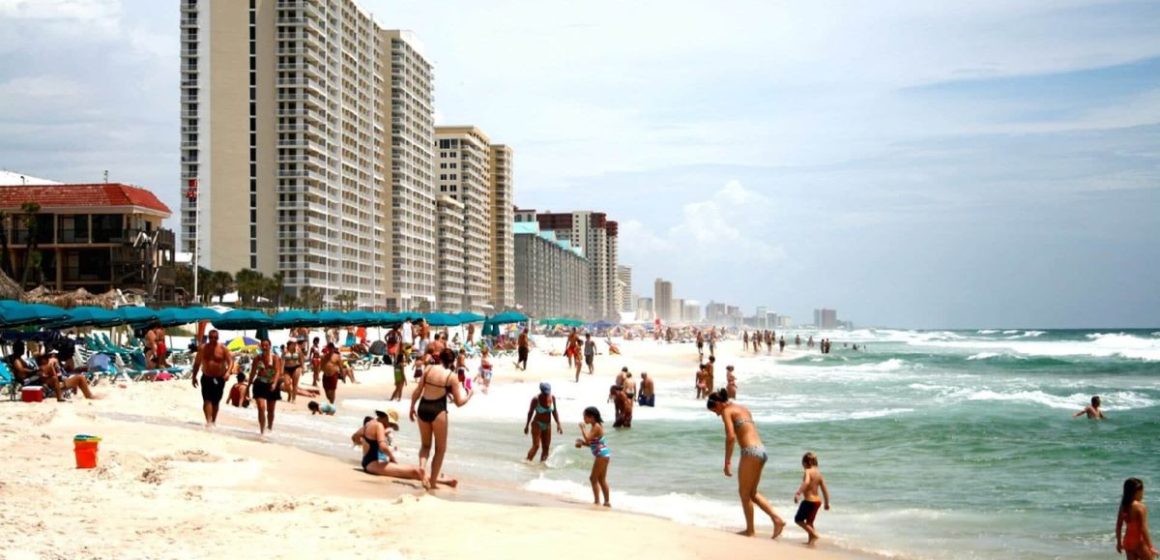Panama City Beach is a well-liked tourist attraction because of its immaculate white sands, blue ocean, and exciting nightlife. But underlying that picture-perfect exterior comes a darker side that can present serious risks to guests.
This post will examine the potential natural hazards at Panama City Beach and offer crucial details to guarantee a fun and safe trip.
Panama City Beach: A Beautiful Oasis with a Deadly Secret
The Sunshine State attracts hundreds of millions of people each year, with over 800 miles of coastline and nearly 200 public beaches (140.6 million in 2023 alone, according to Visit Florida). We’re willing to bet that a sizable portion of these visitors come for the golden sands.
Although people travel to Florida to enjoy its beaches, not all of the state’s beaches are as beautiful or safe as others.
Indeed, there are some of the most hazardous beaches in the country, with Panama City Beach topping the list due to its lethal rip currents that have sadly taken far too many lives.
Rip currents are nothing to be taken lightly if you’ve never encountered one. They can travel at up to eight feet per second and are described as “localized currents that flow away from the shoreline toward the ocean” by the National Ocean Service.
The strength of these currents varies, but the strongest ones are capable of quickly carrying away even skilled swimmers.
Roughly eight lives were lost to rip currents at Panama City Beach in 2024 alone, seven of which happened in a mere nine days. Six people lost their lives to these rip currents last year as well.
Read Also: Beach Alert: Contaminated California Beaches You Shouldn’t Visit
In an effort to reduce accidents caused by rip currents, Panama City Beach has taken preventative steps
Due to the concerning increase in events at Panama City Beach involving rip currents, the city has greatly increased its efforts to ensure the safety of both visitors and locals.

The Bay County Tourist Development Council allocated an extra $360,000 in July 2024, devoted exclusively to safety precautions. This financial boost also allowed the city to recruit six more lifeguards to monitor the busier beaches.
“We invite visitors to come enjoy our beaches,” Mayor Stuart Tettemer stated. “We should be doing what we can in order to keep them safe. The Gulf is a wilderness. It is not a pool. It is not a lake. It is not a creek. It is a wilderness, and it is different than the bodies of water many of our visitors are use to dealing with.”
The city’s increased safety initiatives include installing flotation devices along the coast to be used in an emergency when lifeguards aren’t immediately available, starting a Beach Ambassador Program to put more boots on the sand and warn beachgoers about the dangers of rip currents, and investing in new imaging technology to identify swimmers in distress more effectively.
Additionally, citations are being issued by Panama City Beach to anybody who disregard red flag alerts. These flags are meant to alert people to potentially harmful water conditions. If they choose to go into the water in spite of the warning, they risk fines of up to $500.
Read Also: Before You Swim in Palm Beach, Florida – Know This Hidden Danger
How to avoid getting caught in rip currents?
You should understandably have second thoughts about going to Panama City or any other beach in Florida after learning about the risks posed by rip currents.
Nonetheless, you ought to be able to enjoy the beach worry-free if you abide by the safety regulations and maintain your vigilance. The secret is being able to recognize rip currents and, more crucially, understanding how to escape them. First and foremost, you should always heed warning signs.
Even if the water looks calm, a red flag means danger. Beach Safety Director of Panama City Beach Fire Rescue Daryl Paul said, “Don’t treat a single red flag and your assumption that you can enter the water as a green light.”



Leave a Reply